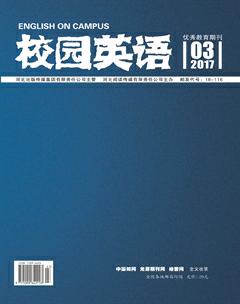唐诗《春江花月夜》英译比较研究
胡秋
【摘要】《春江花月夜》是唐诗中一颗璀璨的明珠,千百年来令无数读者为之倾倒。本文选择《春江花月夜》的两个英译本进行比较研究,为诗歌翻译实践提供借鉴。
【关键词】《春江花月夜》 英译 比较研究
唐诗《春江花月夜》被誉之为“孤篇盖全唐”。诗篇清丽脱俗,表现出气派辽阔的宇宙意识。本文选取许渊冲和张庭琛的英译本,进行比较研究。
一、壮丽之景
全诗共三十六句,开篇前四句以雄浑的笔触、细腻的感受勾勒出一幅绚烂壮丽的画面。
“春江潮水连海平﹐海上明月共潮生。
滟滟随波千万里﹐何处春江无月明。”
In spring the river rises as high as the sea,
And with the rivers tide uprises the moon bright.
She follows the rolling waves for ten thousand li,
Where the river flows, there overflows her light. (許译)
In spring the river swells level with sea,
The bright moon rise mounting the tide.
Waters flash with infinite light.
Where on the spring river is there no bright moon? (张译)
许译第一句主语为“river”,第二句主语为“moon”,以介词开头的倒装“with the rivers tide”作为衔接,上下句连贯顺畅,又凸显了“共潮生”。第三句“she”做主语,采用拟人的手法,承接第二句中的主题明月。“sea”与 “li”押韵, “bright” 与“light”押韵,读来朗朗上口。许译兼具内容形式之美。
张译“the river swells level with sea”中“swell”一词,形象生动地描绘出了江水涨潮的动态之美。第三句以“Waters”开头做主语,而“滟滟随波千万里”的隐含主语实则为月,看似在句法上比较接近汉语原诗,却不太符合英语的衔接手法,使得译文不够连贯。
二、宇宙哲思
诗人从春江月夜的美景写起,在巨大的孤寂中,独与天地精神往来,引出对宇宙人生的哲学思索,感慨生命有限,时间空间无限,发出无解的天问。
“江畔何人初见月,江月何年初照人。”
Who by the riverside first saw the moon arise?
When did the moon first see a man by riverside? (许译)
When did the moon first shine on men?
Who first saw the moon from the riverside? (张译)
原诗主语分别是人和江月,许译中句子主语分别是“who”和“moon”,与原诗顺序一致。张译反其道而行之,分别以“moon”和“who”做主语,以“moon first shine on men”对应“何人初见月”,别出心裁。
三、人世深情
诗人接下来写到人间的游子思妇的离愁别绪和相思之情。
“此时相望不相闻﹐愿逐月华流照君。”
She sees the moon, but her beloved is out of sight;
Shed follow it to shine on her beloved ones face. (许译)
Now we only trace each others likeness in the moon.
If only I could stream down upon you in the moonlight, (张译)
“此时相望不相闻”, 游子思妇互望月亮却看不见对方。主语省略,许译采用第三人称“she”来显化,“She sees the moon, but her beloved is out of sight”体现出相望不相闻的无可奈何。
张译采用第一人称,“Now we only trace each others likeness in the moon”,描绘出只能在月光中追逐彼此身影的绝望。
“愿逐月华流照君”把现实的绝望转化为饱含深情的愿望。张译“If only I could stream down”比许译“Shed follow”更能体现出强烈的愿望。
两个版本的译文各有千秋,个别地方值得完善,通过对比分析,为诗歌翻译实践提供借鉴。
参考文献:
[1]许渊冲.唐诗三百首[M].北京:五洲传播出版社,2012.
[2]张庭琛.最美是唐诗[M].北京:中国对外翻译出版公司,2006.

